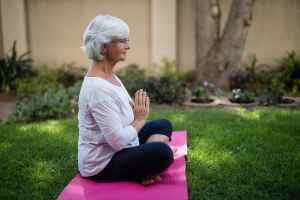Nursing Homes in Ohio
Ohio is a Midwestern state with a population of 11,689,100. Approximately 17.5% of residents are at least 65, which is 1% above the national average. Ohio is a financially attractive place for seniors and retirees with a cost of living that's almost 20 points below the national average and long-term care costs that are lower than many states. Ohio has a moderate climate. It averages 40 inches of rain a year, 2 inches more than the national average, and 28 inches of snow, which equals the national average. As the senior population in Ohio increases, the number of residents aged 65 and above is expected to triple by 2040, and the number of residents aged 85 and above is expected to quadruple by 2050, so resources devoted to Ohio’s elderly residents are likely to increase.
Seniors and their families or their caregivers will find 978 skilled nursing homes or facilities in Ohio. These facilities provide care for seniors who suffer from complex medical issues or have severe disabilities. This guide looks at the cost of nursing care in Ohio as well as government resources that can help seniors and their families pay for the cost of long-term care.
SeniorAdvice's Guide to Nursing Home Care in Ohio
Ohio is a good choice for seniors according to research by SeniorAdvice. It produces the SeniorScore, which looks at the livability of communities and states across the country. SeniorScore uses 100 data points from a variety of government and private databases to create an overall rating as well as scores in four different categories: Health & Safety, Recreation & Leisure, Finances and General Quality of Life. Ohio has a good SeniorScore of 74, which is two points higher than the national average.
Ohio’s highest score came in Recreation & Leisure. The state has numerous state and municipal parks and 735 golf courses. Seniors will find 4,860 churches and numerous synagogues and mosques in the state.
Health & Safety and Finances tied with a mark of 66. Seniors have access to many Medicare-registered health care providers as well as a high number of hospitals and several internationally known health care clinics. Ohio has high property and violent crime rates compared to the national average. In Finances, any senior receiving Social Security is fully exempt from the state's 2.85% income tax, and they're only partially taxed on any income from private pensions.
Ohio’s lowest mark came in General Quality of Life mostly based on the state’s climate. While Ohio matches national averages for rain and snowfall, it only has an annual annual temperature of 50.4 degrees and an average high temperature of 60.2, which is pleasant but not warm. Ohio receives 175 days of sunshine, which is about 25 days below the national average.
Top Nursing Care in Ohio
Parkside Villa is a 165 unit senior housing community located nearby the Riverside area of Middleburg Heights, Ohio. The facility is in a predominantly middle class area, with an average per-family income of $47,300. With roughly 52,000 people ...
Located close to the Five Points neighborhood of Springboro, Ohio, Hillspring of Springboro is a 140 unit senior housing facility. The community is in a largely upper class area, with an average per-household income of $87,378. With around ...
Heather Hill Care Communities is located at 12340 Bass Lake Rd in Chardon, Ohio. It is a 161 bed senior care community. The encompassing area is heavily populated, with roughly 25,000 individuals living in the zip code of ...
Hyde Park Health Center is a 190 unit nursing care facility. It is situated within the Madisonville area of Cincinnati, Ohio. The neighboring area has an average population density, with roughly 11,000 residents in the zip code of ...
Friendship Village is a 127 room senior housing facility. It is located close to the Northern Hills area of Dayton, Ohio. The facility is in a generally middle income area, with a median per-household income of $40,438. ...
The Courtyard at Lexington Assisted Living is a senior community located at 2345 Lexington Ave in Salem, Ohio. The community is in a predominantly middle income area, with a median per-family income of $43,114. It is densely populated, ...
Heartland of Dublin is located in the Riverside neighborhood of Dublin, Ohio. It is a 120 unit senior community. The encompassing area is densely populated, with roughly 39,000 people residing in the 43017 zip code. With a ...
Oak Hills Rehab is a 70 bed nursing care facility located close to the Westwood neighborhood of Cheviot, Ohio. The neighboring area has a dense population, with roughly 37,000 individuals residing in the 45211 zip code. With an ...
Huntington Woods Care and Rehab Center is located at 27705 Westchester Pkwy in Westlake, Ohio. It is an 82 room nursing care facility. With a median family income of $70,631, the facility is in a generally middle class ...
Located in the Westwood neighborhood of Cincinnati, Ohio, Terrace View Gardens is an 82 room senior community. The neighboring area is densely populated, with about 37,000 residents in the zip code of 45211. It is a generally middle ...
Mill Run Gardens and Care Center is a 66 unit senior housing facility located within the Mill Run neighborhood of Hilliard, Ohio. The facility is in a primarily middle income area, with an average household income of $72,081. ...
Canton Christian Home is located at 2550 Cleveland Avenue NW in Canton, Ohio. It is a 75 unit senior care community. With roughly 20,000 poeple living in the zip code of 44709, the encompassing area has a medium-density ...
New Dawn Retirement Community is located at 865 East Iron Ave in Dover, Ohio. It is a 98 room senior housing facility. The encompassing area has a medium-density population, with roughly 20,000 individuals residing in the 44622 zip ...
Situated near by the Riverside neighborhood of Middleburg Heights, Ohio, Southern Hills Skilled Nursing and Rehabilitation Center is a 100 bed nursing care facility. With an average household income of $47,300, the community is in a primarily middle income ...
The Laurels of Huber Heights is a 100 unit senior care community. It is located at 5440 Charlesgate Rd in Huber Heights, Ohio. With around 51,000 residents in the zip code of 45424, the surrounding area has a ...
Kingston Care Center of Sylvania is located at 4121 King Rd in Sylvania, Ohio. It is a 127 bed senior care facility. The community is in a predominantly middle class area, with an average per-family income of $73,264. ...
O'Neill Healthcare North Olmsted is a 56 bed nursing care facility. It is located around the Riverside area of North Olmsted, Ohio. The community is in a largely middle income area, with an average per-household income of $59,495. ...
Amherst Manor Retirement Community is a 100 bed senior housing community. It is located at 175 N Lake St in Amherst, Ohio. The surrounding area is heavily populated, with roughly 22,000 people residing in the 44001 zip code. ...
Heartland of Mentor is a 167 unit senior housing facility. It is located at 8200 Mentor Hills Dr in Mentor, Ohio. With about 61,000 individuals living in the zip code of 44060, the neighboring area is densely populated. ...
Manorcare Health Services-Willoughby is a 173 bed nursing care facility located in Willoughby, Ohio. The surrounding area is heavily populated, with around 36,000 individuals living in the zip code of 44094. It is a largely middle class area, ...
The Cost of Nursing Home Care in Ohio
The cost of nursing homes in Ohio is competitive when examining the Genworth Cost of Care Survey 2020. The average monthly cost of nursing home care in Ohio of $7,148 is considerably less than the national average of $7,756 and lower than many nearby states. Nursing home care in Ohio costs more than $4,000 less than West Virginia, which averages $11,376 a month. Michigan is $1,700 a month more expensive at $8,973, while Indiana is slightly less expensive than Ohio, averaging $15 less a month at $7,133.
- Ohio: $7,148
- USA: $7,756
- Indiana: $7,133
- West Virginia: $11,376
- Kentucky: $7,330
- Michigan: $8,973
The Costs of Nursing Home Care in Ohio’s Top Cities
The cost of nursing home care in Ohio largely falls between $6,800 and $8,000 per month. Akron has the highest cost of $8,121, while Cleveland is next at $7,848. Toledo averages $7,604 a month while Youngstown is $7,300 a month. Columbus, the state capital, is next at $6,996, while Lima has one of the lowest costs in Ohio at $6,874 a month.
- Akron: $8,121
- Cleveland: $7,848
- Toledo: $7,604
- Youngstown: $7,300
- Columbus: $6,996
- Lima: $6,874
Senior Care Cost Comparisons in Ohio
While the cost of nursing home care is more expensive than other options, it remains competitive. Memory care averages $5,438 a month, while residing in an assisted living facility costs $4,350 a month. Having a homemaker help seniors age in place runs $4,481 a month. A home health aide is slightly more expensive at $4,566 month. Adult day care provides the lowest cost of $1,300 a month.
- Assisted Living: $4,350
- Memory Care: $5,438
- Homemaker: $4,481
- Home Health Aide: $4,566
- Adult Day Care: $1,300
- Nursing Home Care: $7,148
Financial Assistance for Nursing Home Care in Ohio
As you can see above, Nursing Home Care is often the most expensive senior care option – sometimes even 2-3 times the cost of other types of senior living. The primary reason for this is the 24/7 skilled nursing and other medical services that are provided. Thankfully, most people aren't forced to pay for skilled nursing care entirely out-of-pocket. Rather, many qualify for financial assistance programs to help cover the cost of nursing care.
Medicaid is the most comprehensive financial assistance program – but, not all seniors are eligible for Medicaid. And because each state operates its own Medicaid program within federal guidelines, eligibility and benefits vary from state to state. Below, we provide more information on Medicaid in Ohio.
Medicaid in Ohio
Medicaid is a form of health insurance provided to low-income seniors and certain adults and children by the state and federal government. Since Ohio expanded Medicaid enrollment in July 2013, membership has increased by 37.6%. As of November 2020, 2,931,222 individuals were enrolled in Medicare or the Children's Health Insurance Program (CHIP) in Ohio, which is about 25% of the state’s population. Most of the state's 978 skilled nursing facilities accept Medicaid.
Medicaid Eligibility in Ohio
Medicaid in Ohio is governed by the state’s Department of Medicaid. To qualify for benefits to help pay for long-term care, eligible seniors must meet financial and health guidelines. These include:
- Financial limits for applicants are 90% of the federal poverty guidelines for parents or caretaker relatives and 133% for adults aged 19 to 64. Individuals who require long-term care can earn up to $2,382 per month. This figure is calculated by using wages, Social Security and pension income. Supplemental Security Income is not used in the calculation.
- Resources and assets have a limit of $2,000 for individuals and $3,000 for couples. A senior’s home and one car are not used in this calculation, but a second car may be counted.
- Seniors must undergo a medical examination to determine if they meet guidelines for a nursing home level of care.
- Beneficiaries must be a U.S. citizen or have qualified alien status
- They must have a Social Security number.
- They must be a resident of Ohio.
- Non-U.S. citizens may be eligible for other relief programs, such as Alien Emergency Medical Assistance or Refugee Medical Assistance.
Seniors who meet these eligibility guidelines may receive financial assistance to help with medical coverage and nursing home benefits. A staff person from the local Area Agency on Aging (AAA) will conduct a level-of-care assessment to determine if a senior needs to be placed in a nursing home. The main number for AAA offices in Ohio is (800) 421-7277.
Additional Financial Assistance Options
- Medicare: For the first 20 days in a skilled nursing facility, Medicare will cover the entire cost of care, and a portion of the costs up until day 100. After 100 days, Medicare won't cover any of the costs. Importantly, seniors must also have a "qualifying hospital stay" that lasts 3 days prior to their admission to a nursing home in order to qualify for Medicare coverage.
- Aid and Attendance: Aid and Attendance may be available to veterans who receive a VA pension. This benefit is a monthly cash allowance that veterans receive in addition to their standard pension amount. It is intended for veterans in need of long-term care services and may be used to pay for skilled nursing care.
- Reverse Mortgages: For those who own a home, reverse mortgages are loans that one can take out against the value of their home, essentially converting some of the home's equity into cash. It's often a good fit for married couples when only one partner needs nursing care, as the other residents of the home may continue living there. Keep in mind that reverse mortgage loans do need to be repaid (with interest), typically within 12 months of receiving the loan.
- Long-Term Care Insurance: For seniors who already have long-term care insurance, the cost of skilled nursing care may be covered. Most policies cover at least a portion of the costs, but it depends on the specific policy terms. It's important to note that older adults who are already in need of skilled nursing care will not be eligible to sign up for a long-term care insurance policy.
Ohio Nursing Home Care Rules and Regulations
The Ohio Department of Health licenses and/or certifies nursing homes in the state. Additionally, it maintains a Nurse Aide Registry that lists all individuals who have met the appropriate competency requirements. The department determines the type and number of residents a facility may accommodate and provides guidelines for personnel requirements, residential assessments, care planning and personnel training. Some of the regulations that nursing homes in Ohio need to follow are:
Scope of Care | Nursing homes are required to provide 24/7 physical and medical care for all residents. They must employ at least a state-mandated minimum of personnel to ensure that these needs are met, including licensed administrators, registered nurses, nursing aides, rehabilitation therapists and a pharmacist or a consulting pharmacy service. Each admission needs to be approved by a physician or a registered nurse who will then prepare a plan for that residents' care. |
Care Planning | Nursing care facilities shall conduct a comprehensive needs assessment of each new resident within 14 days of their admission. The facility shall also perform an annual assessment of the resident’s emotional, physical and medical needs within 30 days of the anniversary of the previous assessment. The facility may reassess resident's needs every three months unless a change in behavior necessitates a more immediate assessment. The resident shall have access to their plan of care upon their request. |
Pharmacy Services | The facility shall employ a pharmacist on a full-time, part-time or consultant basis or contract with a pharmacy service. They must provide or obtain emergency or routine drugs, medicines or biologicals for residents who have the right to order these medications from their pharmacy of choice. Each resident’s drug regimen shall be reviewed at least once a month by a pharmacist. |
Staff Screening | Every direct-care employee hired by a nursing facility must pass a criminal background check, including fingerprints. The facility shall ensure that each employee has received the appropriate training required for their occupation. Each new employee must undergo a physical examination within 30 days before beginning work. |
Staff Training | In Ohio, a certified nurse aide must complete at least 75 hours of training, including skills training and classroom instruction. A facility, however, may use a nurse aide for up to four months who has not received this training. Facilities must ensure that a nurse's aide receives 12 hours of in-service education every year. The facility must ensure that all other appropriate personnel receive in-service training at least annually. Otherwise, the frequency of this training depends on the employee's occupation. |
Medicaid Coverage | The Ohio Department of Medicaid provides eligible seniors with financial assistance to help cover the cost of nursing home care. Seniors must meet income and asset requirements and complete an assessment through a local Area Agency of Aging office to determine if they require a nursing home level of care. |
Reporting Abuse | The Ohio Long-Term Care Ombudsman Program investigates complaints of abuse or neglect in long-term care facilities within the state. Seniors, families or caregivers who suspect neglect or abuse can make a report by calling (800) 282-1206. |
Free Nursing Home Resources in Ohio
Ohio Health Care Association
The Ohio Healthcare Association (OHCA) represents over a thousand long-term care facilities in Ohio, including skilled nursing homes. It provides ongoing training for nursing home care employees and regular seminars on important issues in long-term care. Membership is open to any certified or licensed nursing home facility in Ohio.
ProSeniors Legal Hotline for Seniors
The hotline provides free legal advice, referrals and information to residents aged 60 and older. Seniors can talk to an attorney for up to 30 minutes who will help them until their situation is resolved or refer them to a staff or outside professional at a reduced rate. ProSeniors' attorneys assist with topics such as Medicare, Medicaid, durable powers of attorney and other consumer issues.
Ohio Agencies
Ohio Department of Aging
246 N. High St.,1st Fl., Columbus, OH 43215
(800) 266-4346
https://aging.ohio.gov/wps/portal/gov/aging/home
The Ohio Department of Aging provides many relevant resources and information about long-term care for seniors, their families and their caregivers. This includes a directory of Long-Term Care Agency Providers to help in the search for an appropriate facility, a Long-Term Care Consumers Guide and information on Current Nursing Home Quality Improvement Projects. The department also has information on benefits available to residents of nursing homes who qualify under financial and resource guidelines.
Long-Term Care Ombudsman Program
246 N. High St., 1st Fl., Columbus, OH 43215
(800) 282-1206
https://aging.ohio.gov/wps/portal/gov/aging/care-and-living/get-help/get-an-advocate
Working through local Area Agencies on Aging, these trained volunteers resolve complaints that relate to the welfare of individuals who reside in long-term care facilities. Long-term care ombudsman help resolve issues between residents and facilities, between residents themselves and even sometimes between residents and families or caregivers. They also educate local communities about seniors' rights.
Ohio Department of Insurance
50 W. Town St., Suite 300, Columbus, OH 43215
(614) 644-2658
https://insurance.ohio.gov/wps/portal/gov/odi/consumers/long-term-care
The Ohio Department of Insurance advises seniors and their families or caregivers about health care insurance that can provide financial coverage in a long-term care facility, including a nursing home. This includes an explanation of the Basics of Long-Term Care and a comprehensive Guide to Long-Term Insurance that includes information on buying coverage and how these products work with Medicaid.
Area Agencies on Aging in Ohio
Ohio's 88 counties are represented by 12 Area Agencies on Aging that provide information, education and referral services to seniors in designated communities. While AAA offices operate independent programs, they also work with local organizations in the public and private sector to assist senior Ohioans who are aging in place or residing in long-term care facilities. Seniors and their families or caregivers can call (866) 243-5678 to be connected to their local AAA.
Veteran Affairs Office in Ohio
The mission of the Ohio Veterans Affairs Office is to ensure that all eligible veterans and their families or their survivors receive the benefits to which they are entitled. This includes access to veterans homes that provide long-term care. The department also provides information on financial assistance available to veterans and help with health care appeals, pension or disability benefits and long-term care planning. Veterans can visit any one of the 88 County Veteran Services Offices in Ohio for more information.
Social Security Offices in Ohio
The Social Security Administration provides retirement benefits for seniors and the disabled and offers assistance to low-income seniors facing financial burdens through Supplemental Security Income (SSI). Some SSI benefits can be used to help pay the costs of room and board at a nursing facility in Ohio. Social Security provides a locator to guide seniors, their families or caregivers to a local Social Security office that they can call or visit to learn more about available benefits.






















 Your Information is Processing
Your Information is Processing